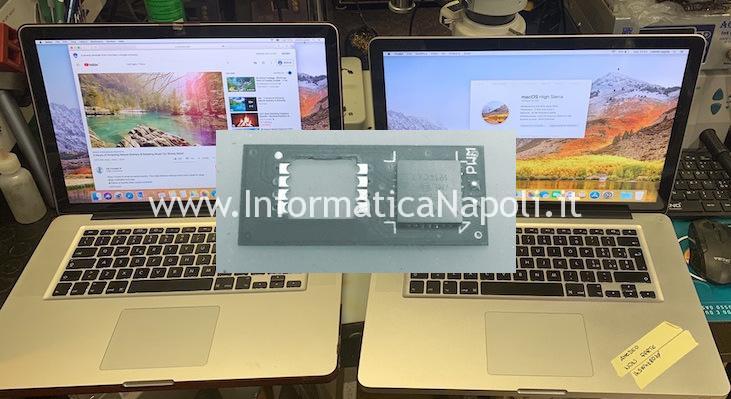

- #2011 macbook pro multiple monitors how to#
- #2011 macbook pro multiple monitors mac#
- #2011 macbook pro multiple monitors windows#
Tried saving workspace and it didn't help.

Then I just drag it to the first monitor and set fullscreen playback to second one (yes, I have to do this everytime).
#2011 macbook pro multiple monitors windows#
What I do now is launch Media Composer with second monitor turned off (actually I physically remove HDMI cable), after openening project (when all windows are on one monitor) I turn on second monitor, then Media Composer somehow moves its windows to it ( although it is not set as primary). But everytime I open Media Composer with both monitors on, it puts its windows (bins, timeline, source and timeline monitors etc.) on both monitors (bins - on one monitor and everything else on another). The way I regulary work is the whole Media Composer interface on one monitor and fullscreen playback on another.
#2011 macbook pro multiple monitors mac#
Got an old iMac? You can use it as a secondary monitor for your Mac with Apple’s Target Display Mode-but the host Mac needs to be pretty old as well.My current setup is Macbook in clamshell mode and two external monitors.
#2011 macbook pro multiple monitors how to#
For more information on how to set up Sidecar, check out our dedicated how-to. It should immediately start working, and you don’t even need to unlock the iPad. Find the iPad you want to use as a secondary monitor from the resulting drop-down menu and select it. On your Mac, click the AirPlay button on your Mac’s menu bar, which looks like a rectangle with a solid triangle pointing upward from the bottom. Now that that’s out of the way, make sure your iPad is turned on and near your Mac. You’ll also need a MacBook or MacBook Pro that was made in 2016 or later, a 2015 27-inch iMac 5K, or any 2016 iMac or later (including the Pro), a 2018 Mac mini, or the 2011 or 2019 Mac Pros. More specifically, you’ll need at least a 5th-generation iPad, an iPad Air 2, and iPad mini 4, or any iPad Pro. Otherwise, your mouse pointer will simply go down to the bottom screen.)įirst, make sure the Mac is running at least macOS Catalina and your iPad is running at least iOS 13. (If you have your monitors set up the way I do, make sure you make these downward strokes in a corner of the display that doesn’t overlap with the main MacBook display. The dock should then switch over-although keep in mind that it may take some practice. Then makes two swift downward strokes along the bottom of the display where you would like for the dock to appear. To do this, move your mouse pointer up to the desktop of the secondary monitor and click anywhere. So if you put your secondary monitor above your MacBook (as I have in the photo above), make sure you orient the second monitor’s blue rectangle so it’s on top of the blue rectangle representing the MacBook.Īfter that, you may want to move your macOS dock to the secondary screen if you’ll be looking at it more often. The transition is instant.įrom here, simply align the monitors the way they are in real life.

Now that I’ve arranged the displays this way, I can move my mouse pointer to the second monitor just by moving it up. CableCreation USB-C to HDMI/VGA Adapter/Splitter ($16)Īnd if you have an older Apple monitor with a Mini DisplayPort, I try using this dongle for modern USB-C/Thunderbolt 3 MacBooks.Here are some of our recommendations for third-party adapters, most of which have additional ports for products like SD cards, allowing you to get the best bang for your buck. Apple USB-C to VGA Multiport Adapter Remove non-product link ($69).Apple USB-C to HDMI Multiport Adapter ($69).Let’s start with Apple’s own options for HDMI and VGA, which are outrageously expensive for what you’re getting, as you might expect. If you have a standard HDMI-compatible monitor, we recommend this highly rated six-foot $17 USB-C/Thunderbolt 3 to HDMI cable from Uni.Īs for dongles-while not exhaustive, the options below should help with most contemporary USB-C/Thunderbolt 3 Macs. And if you just want a specialized cable for a USB-C compatible MacBook, we recommend Apple’s own $39 USB-C/Thunderbolt 3 cable if you have a Thunderbolt 3-compatible monitor. For everything else, you’re going to need a dongle or a specialized cable.


 0 kommentar(er)
0 kommentar(er)
